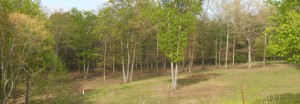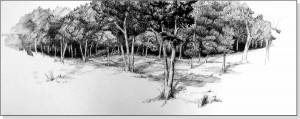
My friend Howard was a very good copy writer in his day. He wrote for the leading ad agencies and won awards for his work. One evening over a drink he told me a story about a time he was on a set where they were shooting a commercial for agricultural products. The creative team was using actors from Atlanta and farm people brought in as extras. As Howard looked on, the actors seemed hopelessly fake and the farm people very real, coming across as exactly what they were. Howard wondered if the smart thing might be to turn the whole presentation over to the farmers. Who would know better about the products or be more able to pitch them convincingly? And then the cameras began to roll. The actors turned into farmers and the farmers turned into wooden caricatures of themselves. Howard said the transformation was startling. Watching the farmers, the actors had quickly got the essence, the main lines, of how the farmers appeared. It was then their gift to relay that impression to the camera. But the camera became the enemy of the farmers, its cold eye threatened them, so they withdrew, suppressing their natural personas and tried to be other than they were. It is not such an easy thing to be who you are when strangers might make judgments about you.
I am always disappointed in my photographs. They never seem to say what I want or cause anyone to feel what I did when viewing the scene. Perhaps really great photographers can manage to capture all that, but even they don’t drink in reality unfiltered. I once watched a show on how Ansel Adams manipulated his prints in the dark room in order to get the effects he wanted. The variety of images processed from the same plate was striking, and this was done well before our time of digital photography and Photoshop. Adams bent ‘reality’ to conform to his vision and then presented the vision to us and we took it for fact. We should have taken it for art.
For me the goal in making art is revealed in the actors craft or in Adams careful work in the dark room. It is the process of compression, interpretation, the elimination of the unnecessary, the grabbing and understanding the main lines of the thing and thereby transforming reality to create a coherent statement from an incoherent visual world. Reality is far too complex a thing to put down on a piece of paper or a canvas and there is no merit in trying. The artist must pick and choose, focus on the essence. When well done, this triage does not diminish the result; when successful it reveals a better defined truth—a truth formerly concealed in needless complexity.
To illustrate my point, I offer here a pen and ink drawing and a photograph. The drawing was not made from the photo; the photo was taken well after the drawing was done (this morning to be precise). The drawing might have been done in many different ways but the point is still served—the photo does not make my statement, the drawing does.
Frank Wilson’s Pasture– photo April 29, 2013

“Frank Wilson’s Pasture” 9×24 Pen & Ink Private collection
Copyright 2013 James Tucker